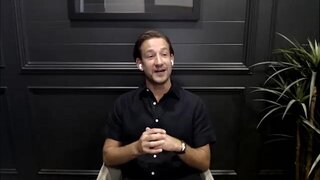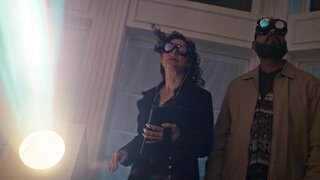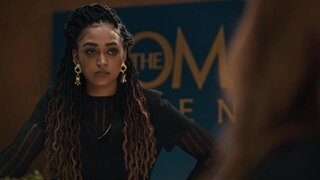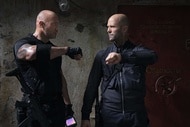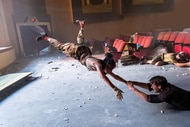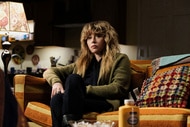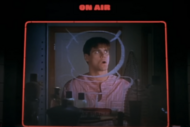Create a free profile to get unlimited access to exclusive videos, sweepstakes, and more!
The Fascinating Real Story Behind the Winchester Mystery House
The true story behind the movie Winchester is one of the greatest haunted house legends ever.
If you've visited San Jose, California, one of the first things you'll probably hear about from locals and tourists alike is the story of the Winchester Mystery House. Today, the Victorian and Gothic styled mansion can be found smack in the middle of one of the busiest areas of the city. But back when it was purchased in 1886 by the Winchester rifle heiress, Sarah Winchester, the original home was the only building of note on the 45-acre ranch.
In the hands of Winchester, the modest two-story, eight-room farmhouse was renovated into a 24,000-square-foot, sprawling property containing 160 rooms, 2,000 doors,10,000 windows, 47 stairways and fireplaces, 13 bathrooms, and six kitchens. And when it was made public why Winchester was continuously revising the house until her death in 1922, it was also dubbed one of the "most haunted places in the world."
Fact Versus Fiction Regarding Sarah Winchester
In 2018, Hollywood finally brought some parts of Winchester's tragic story to screen in the horror mystery, Winchester (now streaming on Peacock). Oscar-winning actress Helen Mirren (The Queen) played Sarah Winchester, and the film focused primarily on one infamous day in the house's history: the 1906 earthquake that destroyed large sections of the property she named Llanada Villa. The film places Sarah in the home at the time of the quake, but in reality that was never verified, nor was there any documentation that she was injured on the day of the event, as subsequent stories have spun.
RELATED: Unpacking the "Hardcore" Haunted Houses & Heartbreak in SurrealEstate Season 2
In fact, history and urban legends have often portrayed Winchester as a mentally disturbed woman who was obsessed with ghosts that she believed were the vengeful souls killed by the guns made by her late husband, William Wirt Winchester's gun company. In reality, Sarah was certainly an eccentric and deeply saddened by tragedies in her life. But she was also an incredible architectural designer, real estate investor, and empathetic small business woman.
It is true that she married Wirt in 1862 and four years later gave birth to a daughter, Annie Pardee Winchester, who died a month later. They never had another child, and just 15 years later, Sarah lost her husband, her mother, and her father-in-law to the plague of her time, tuberculosis. She inherited $20 million, but that didn't make her heart any less broken. Lonely and looking to start anew, she packed up her things in Connecticut and moved to San Jose, California, where she bought the aforementioned ranch.
Was Sarah Winchester a Creative Genius or Just Dodging Ghosts?
Sarah was an amateur architect and loved to design extensions and remodel the properties she owned with her husband. She carried that through with Llanada Villa. According to author Colin Dickey's book, Ghostland: An American History in Haunted Places, she was an accomplished designer who worked with her carpenters closely to bring her ideas and designs to life. She was exacting, and by all accounts, a serial builder and rebuilder when something did not meet her expectations.
Sometimes, her erratic choices created design problems, like walled-off windows or staircases that were cut off by new construction. From 1890 to 1900, Llanada Villa expanded to seven stories. When the earthquake struck six years later, the fourth floor and the seven-story tower was destroyed. But she picked up building once again, which continued until her death in 1922, ceasing 36 years of constant construction.
RELATED: The True Story of The Amityville Horror
In 1922, Winchester's story and subsequent legacy starts to take on a new life. John and Mayme Brown leased Llanada Villa and opened the doors to the public as a tourist attraction. In order to add a hook to tourists, Mayme became the property's first guide, and created stories about Winchester's mental state and reasons for her incessant building that painted her as an unstable figure, when she was likely the exact opposite. Spreading stories of hauntings, they invited Harry Houdini to visit Halloween night 1924 to investigate the home. He visited, but did not have time to hold a seance or conduct research. However, he suggested the houses tourist tagline: "The Winchester Mystery House."
The property then continued with some construction projects and restoration work to make it more of a cultural and tourist destination. In 1970, major restoration to bring the mansion back to its heyday began, and then in 1974, the Winchester Mystery House was granted state historic landmark status.
How Sarah Winchester's Story Got So Twisted
By all documented accounts made by actual historians and researchers who have studied Winchester's life, her story went into pure fiction with the release of author Susy Smith's 1967 book, Prominent American Ghosts. In it, she describes a meeting between a grieving Sarah Winchester and Boston medium, Adam Coons. The book reports as fact that Coons told Winchester, "The Winchester family were being haunted by the ghosts of people killed by Winchester rifles," and the only remedy was to build a home for them to wander. That account was then cited as the real reason for her ongoing, and often baffling, constant construction. She was somehow trying to trick or confuse the ghosts away from her, and that it was protection from their vengeance. In truth, there was no documentation of Winchester meeting any psychic medium, and furthermore, there were no Boston spiritualist named Adam Coons.
RELATED: That Time Kevin Bacon Was Contractually Obligated To Demolish Real-Life Haunted House
That false narrative was stitched together with a San Jose Daily News story from March 29, 1895 that reported that the private woman who owned Llanada Villa and was constantly expanding the property "believes that when it is entirely completed, she will die. This superstition has resulted in the construction of a maze of domes, turrets, cupolas and towers, covering territory enough for a castle." Despite a close friend of Winchester's refuting that reporting in a San Jose Evening News story in 1897, the superstitions stuck like glue to her legacy and became local lore and "fact" that was even incorrectly recorded by the Historic American Buildings Survey (HABS) in 1981.
Supporting Winchester's actual competency were all of her friends, family, and even the builders on her property who defended her as a independent woman and a loyal widow who dressed in black to honor her losses. They also explained that she was reclusive due to poor health. Winchester died in 1922 and willed her fortune to her employees. Nine months later, the house became a tourist attraction.
A century or so later, it also became the basis for a perfect October movie; Winchester is now streaming on Peacock.

